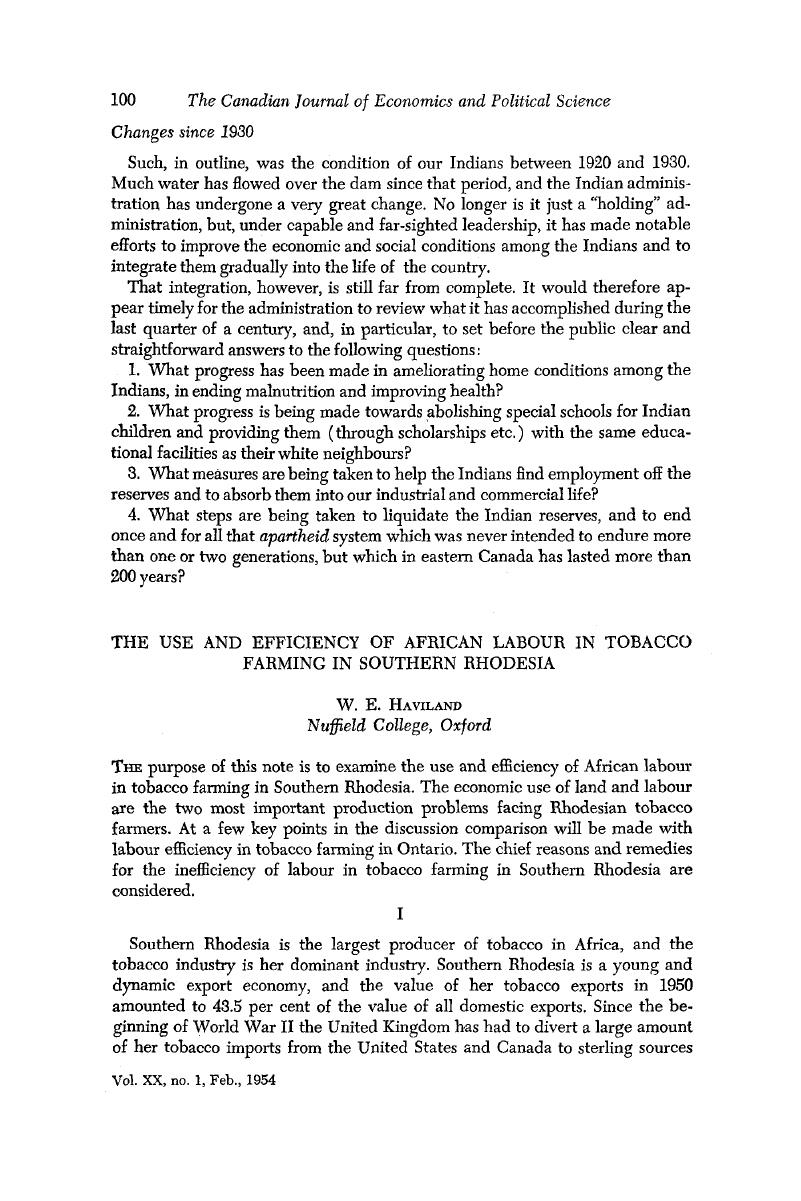Published online by Cambridge University Press: 07 November 2014

1 The Net National Income of Southern Rhodesia in 1950 was £.89.1 million. The index of the value of tobacco per unit in 1949-50, based on 1938-9, was 307 compared with 241 for all agricultural output. In 1945 the index stood at 205 and 158, respectively.
2 Complaints about the shortage of labour are not exclusively a recent phenomenon in Rhodesia. The British South Africa Company's Report for 1903 lamented the uncertain supply and unreliable nature of native labour.
3 An article by the author on the economic history of the tobacco industry of Southern Rhodesia was published in the November-December number of the Rhodesia Agricultural Journal (Salisbury, 1952)Google Scholar and another article, “Tobacco Farm Organization, Costs and Land-Use in Southern Rhodesia,” in South African Journal of Economics, Dec., 1953.
4 The author's corresponding figure for tobacco farming in Northern Rhodesia is 2300 manhours per tobacco acre. International comparisons of labour use have to be interpreted with care. Nevertheless, here are some other data:

* United Nations, Food and Agriculture Organization, Tobacco, Bulletin no. 20 (Rome, 10, 1952), 9.Google Scholar
† Union of South Africa, “Report to World Tobacco Congress” (Unpublished, 1951), 28.Google Scholar
5 Canada, Department of Agriculture, Tobacco Farming and Marketing in Ontario, by Haviland, W. E. (Ottawa, 1951), 9.Google Scholar
6 Cf. Rostas, L., “International Comparisons of Productivity,” International Labour Review, 09, 1948, 287–8.Google Scholar
7 Sold weight of tobacco in both cases.
8 Including rations.
9 The increasing use of women and younger juveniles for the lighter operations complicates the problems of labour relations and efficiency.